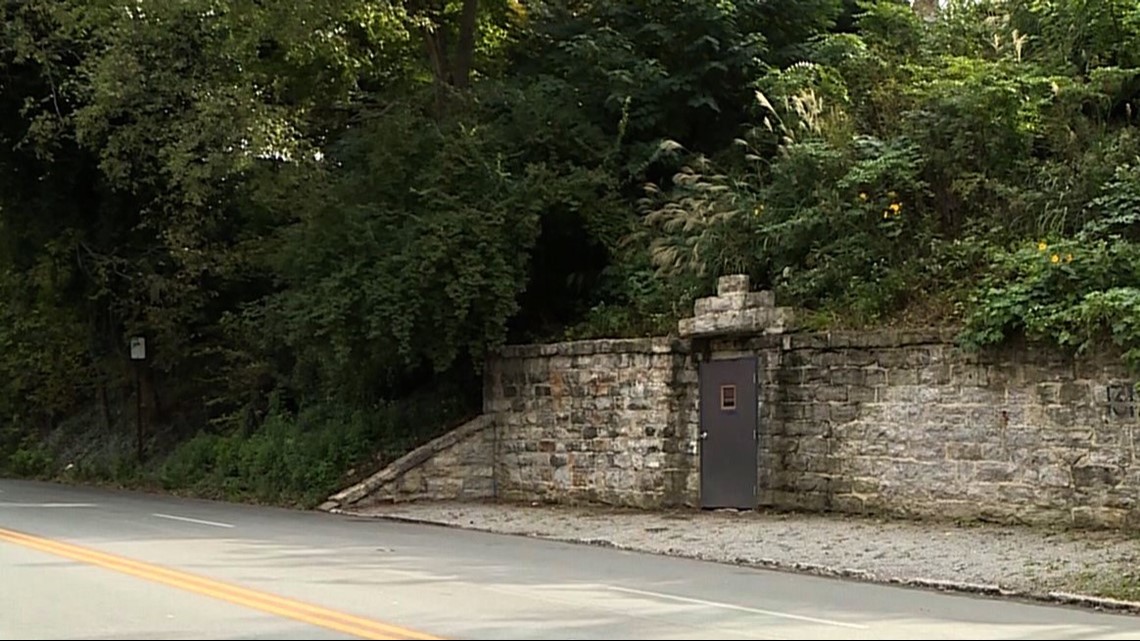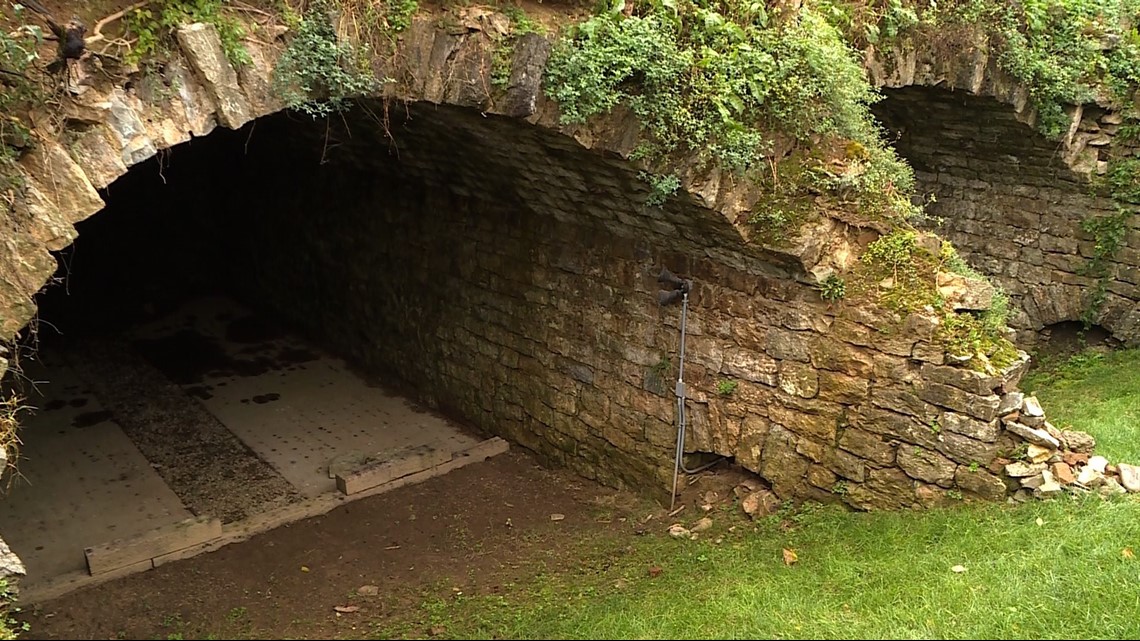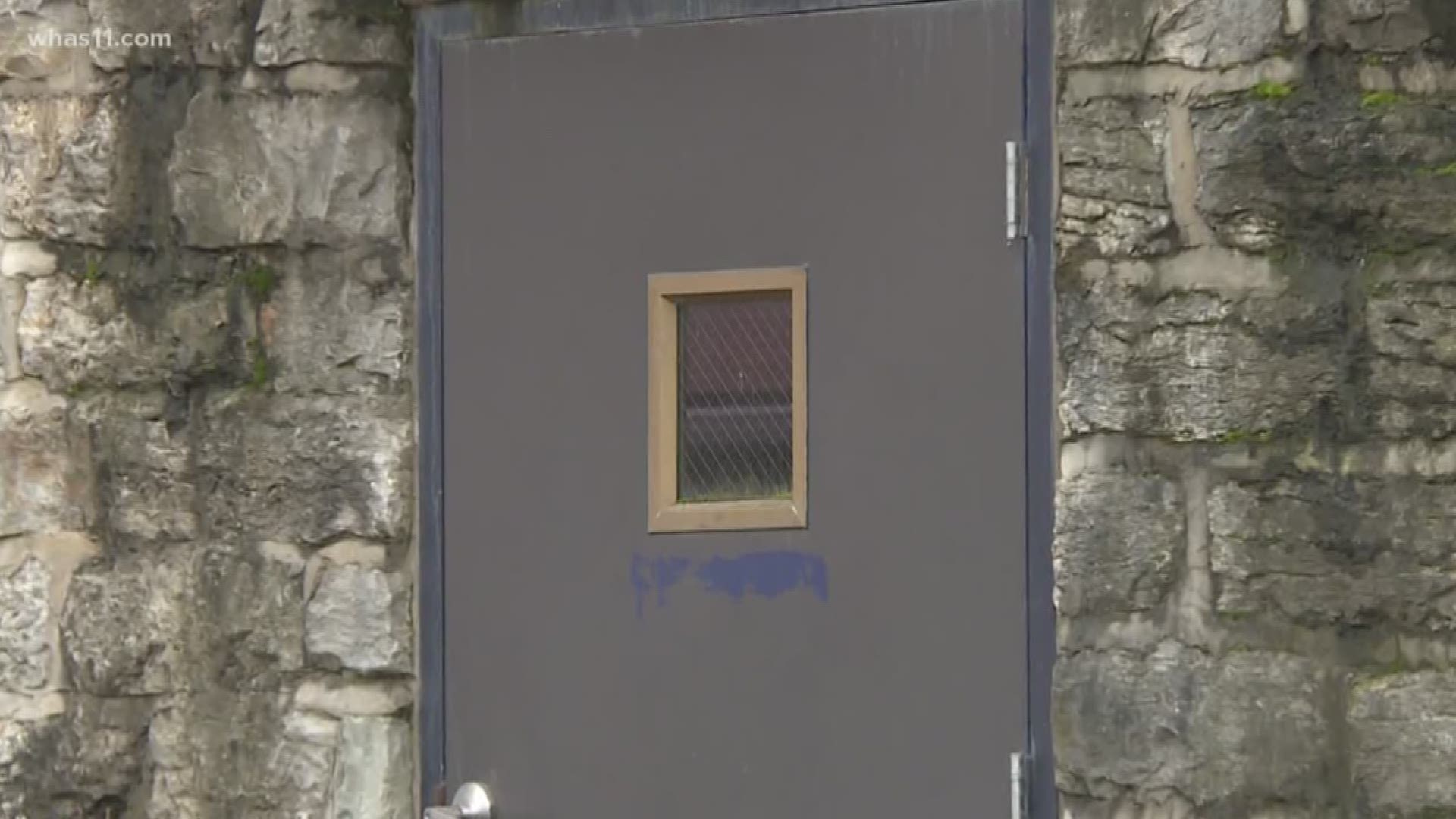LOUISVILLE, Ky. (WHAS11) -- From 1878 to 1968, Louisville’s City Workhouse towered like a fortress over Lexington and Payne Streets.
The massive building no longer stands, but could the old workhouse be a key to solving one of Louisville’s biggest mysteries?
Many have passed by the mysterious door on and wondered what was behind it. What is tucked away in the side of a hill on Lexington Rd?


For the first time, WHAS is giving you a look at a remarkable site that is hidden and closed to the public.
Only one man has the key, and that is Mike Ratterman, the owner. He gave WHAS unprecedented access to the site.
“Yeah, it’s just kind of this anonymous space that’s usually dark and everybody always is curious what’s behind the door,” Ratterman said.
We brought Louisville’s most respected historian, Tom Owen, along to offer his insight. The mysterious site has been a focus of his for many years.
“This is one of the biggest [mysteries] that comes to mind, because this is not the first time I’ve walked this road over this site. Over the last five years, seven years, I’ve pushed every button I knew,” Owens said.
As Ratterman opened the door, a huge, underground cavern was revealed. Inside, it was damp, dark and so quiet, you can hear a pin drop.
Owen has spent years going over maps of Louisville’s original footprint looking for an underground clue, but he has had no luck uncovering what the space was previously used for.
“Dou you mean to tell me that Tom Owen is stumped?” WHAS11’s Doug Proffitt asked.
“I can tell you on this, previously and currently, Tom Owen is stumped,” Owen replied with a smile.
The cavern is hidden beneath a home on Lexington Road. It is made of beautiful, cut stone and is believed to have been installed a few years after the end of the Civil War.
“My wife, Annie, and I both realize how special the place is, which is why we’ve taken the care that we have of it and have been enjoying the mystery of it,” Ratterman said.
But why was this cavern built? We began to explore the possibilities and look for clues.
“If you go to jail, you’re going to have to break up a lot of rocks,” Owen said.
Inmates busted up rocks at the quarry on site. Could the space have been used as some sort of corporal punishment site for the workhouse, which sits 300 yards away?
“There were large scale slaughterhouses on the other side of the street along the middle fork of Beargrass Creek, but there's no indication of smoke on the walls or anything like that,” Owen said.
There are five large air returns that reach high out of the cave. The cavern was designed to breathe.
“Basically, I think, they’re just wicking air down and then out through the ceiling,” Ratterman said.
Ratterman offered a theory that we decided to pursue
“You know, I can only guess, but to me, it seems like a lagering tunnel for the storage of beer. But I don't know that for certain because we haven’t been about to turn up any records,” Ratterman said.
Before prohibition, Louisville was a full-blown beer city. Its German immigrants made it thrive. There were more than 20 breweries with names like Oertel's and Fehr’s, and a half mile down the street from Ratterman's cavern sat the Phoenix Brewery Company, chugging out kegs and bottles in Phoenix Hill.
“I have read articles about their output. I mean, it was on the level of what output of what a modern day, you know, Anheuser Busch would have been in the city of Louisville,” Nathaniel Gravely said.
Gravely, the founder of Gravely Brewing, put his new business right at the site of the old Phoenix Brewing on Baxter Avenue.
When he first checked out the space, he found something interesting.
“So, we come outside and it’s like you walk out the door and it’s like BOOM. You just kind of see these, like ‘What are those?’” Gravely said.
Side by side, two of the original Phoenix beer caverns still partially exist.
Inside, we found air vents in the walls and ceiling just like the air vents in Ratterman's cavern.
One difference is a trough at the Gravely site carried cold water to keep the beer cool.


Did this UK history and anthropology major, turned brewery owner solve the mystery?
“Perhaps, here the history is more sound and solid because we have old footprints and city layouts of where the brewery used to be, and it didn't go that far,” Gravely said. He told us there is no evidence Phoenix used Ratterman’s cavern for storage.
We do know that across the old parts of downtown, at least 25 stone beer caves of all sizes are recorded. But the biggest of them all is dodging the experts. It’s a ghost on the maps.
“I overhear people saying they're prohibition tunnels and bomb shelters and everybody kind works their own theory. I think, you know, the mystery of it is a natural one,” Gravely said.
Maybe in the long run of Louisville’s famed beer companies, the beer barons are getting the last laugh. The 19th century brew masters could be raising the final toast on this true Louisville mystery.
“It’s here and it's dramatic and, we don't know what it was for,” Owen said.
►Contact reporter Doug Proffitt at dproffitt@whas11.com. Follow him on Twitter (@WHAS11Doug) and Facebook.

